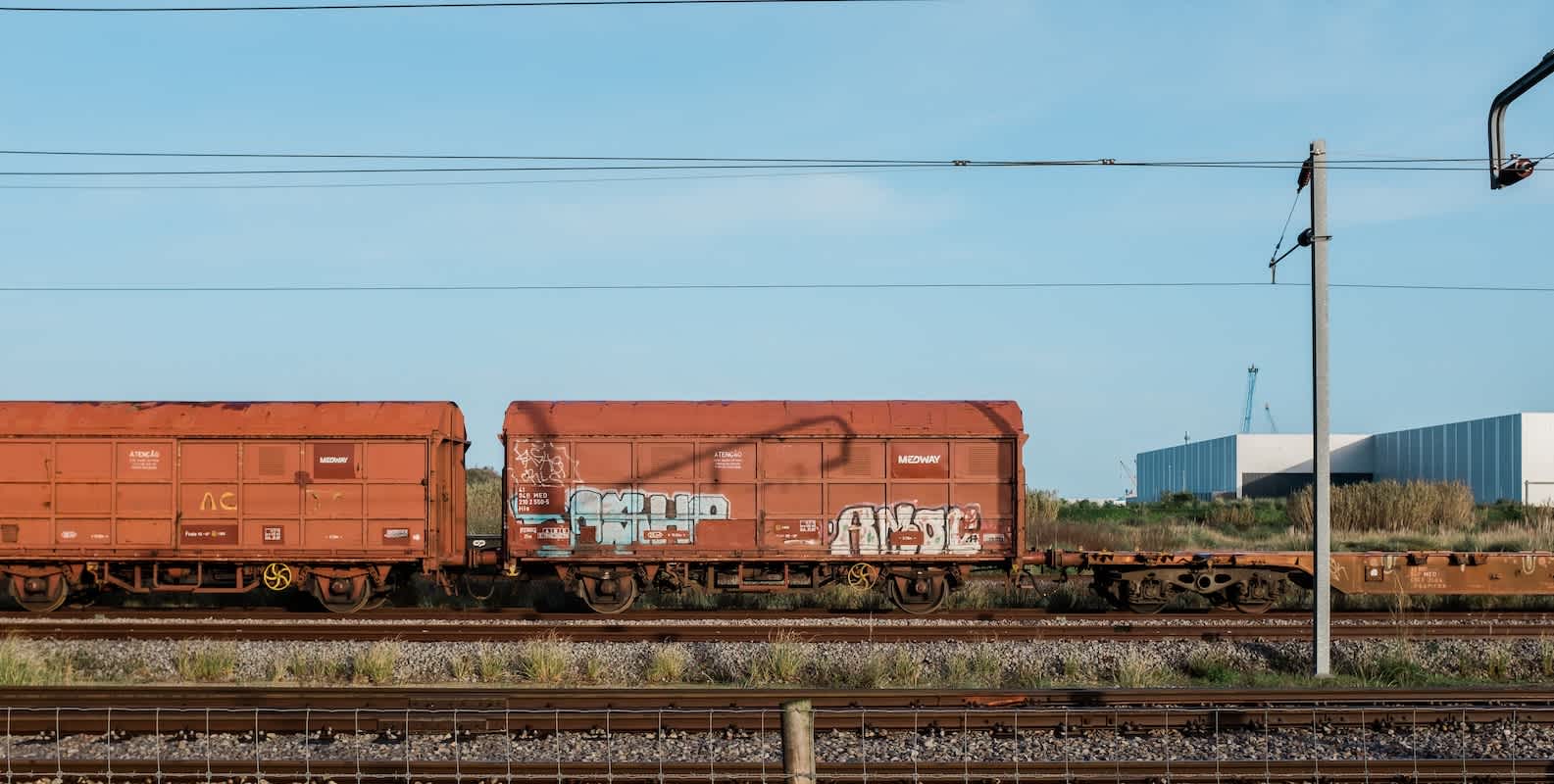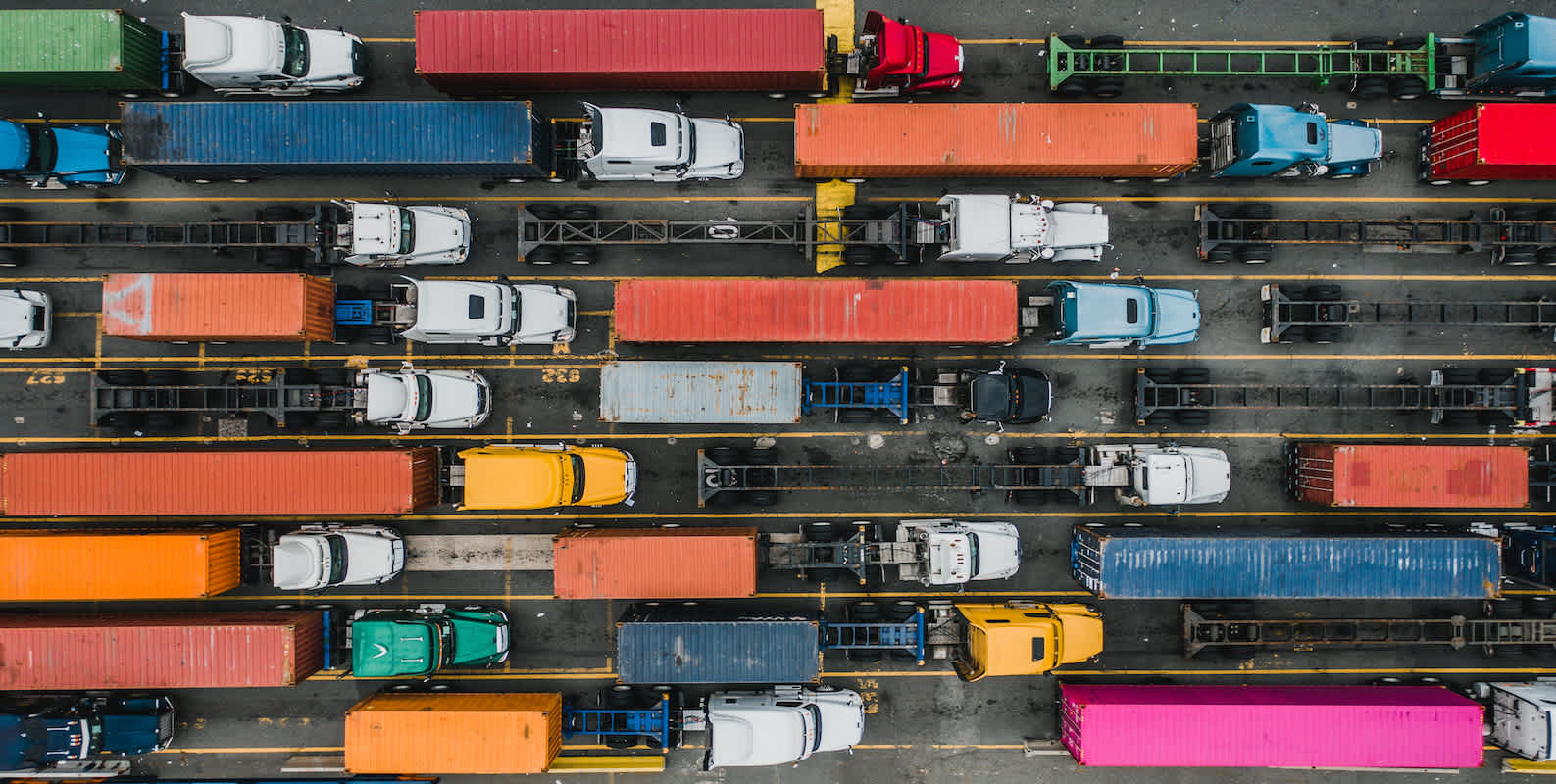
October 24, 2023
The Great Train Robbery: Everything We Know So Far
The Great Train Robbery: Everything We Know So Far
Spikes in cargo theft, along with successful efforts to curb the trend, have hit the news cycle several times over the last couple of years. Starting as the pandemic was just beginning to throw a monkey wrench into the global supply chain and continuing through the most recent spike covering the last 7 months or so.
We’ve had more clients reaching out recently, concerned about their goods and asking for suggestions to help ensure their inventory gets to its destination. Read on to dive deeper into this phenomenon and learn how Flexport is working to mitigate losses for our customers.
2023 Rail Theft Situation: What We Know
Background
In mid-2021 a ‘red zone’ was established around the ports of Los Angeles/Long Beach. Encompassing a vast swath of the Inland Empire, cargo trucks are no longer permitted to stop (not including drayage trucks) within this zone, which also includes heightened security measures around cargo facilities. It didn’t take long for the criminals to learn of this and set up shop around the edges of that zone, which for trains means along the tracks of southeastern Arizona and into New Mexico.
Key things to know about the current spate of rail cargo thefts
The first thing to know is that these are predominantly crimes of opportunity rather than targeted thefts. Known simply as ‘shopping,’ the thieves board trains while they’re passing through built-up, less populated areas and have yet to pick up speed—then they set about looking for containers they can get into easily, using hand-held tools like angle grinders, bolt cutters, and saws.
For example, in one recent case, a train had over 2 dozen containers broken into and pilfered. The criminals are just making their way from one chassis to the next, opening whatever containers they can. Then they dump boxes out into the desert to be picked up later, waiting a day or two to see if anyone shows up thanks to GPS to collect their goods, and if not they load them up and head off to see what they scored.
These criminals may very well ride the train for several days while they see what it’s carrying and plan how to get the goods off-loaded. Another option we’ve seen is where they disable the train—by opening a certain valve or cutting a line—at a predetermined location where they have trucks waiting.
The final key piece of the current situation that’s important to understand is that each rail company has its own private police force. These are sworn officers of the law with limited powers that cross state lines into any state where their company has rails. This is where our Flexport Physical Security team has been making the most progress on finding a solution to the larger problem of rail cargo theft—acting as liaisons between these forces, local law enforcement departments, federal authorities, the Transported Asset Protection Association (TAPA), and our customers. The only way we’re going to curb these thefts is by sharing collected intelligence and coordinating across teams.
“One of the bigger issues that we're seeing is that there's limited sharing of data intel between the rail police and local law enforcement or the federal authorities. We’re helping to facilitate this sharing of data in the interest of not only our customers but the larger community of shippers who are having their goods stolen.” - Bill Schieder, VP of Global Physical Security, Flexport
How Flexport Physical Security Is Assisting Law Enforcement and Recovering Goods for Our Customers
Our team has investigated roughly 100 cases globally thus far in 2023. These are not all rail theft, mind you, however, we would estimate that ~30% are. In those 100 cases, we’ve been able to help retrieve close to $1 million worth of stolen goods for our customers.
One of the tools in our arsenal that’s getting a lot of use right now is our investigations management tool, which includes link analysis. By inputting data on recent thefts, rail schedules, police movements, etc—we’re able to track connections between rail lines, criminal gangs, carriers, and more. This kind of analysis uncovers connections we never would have found otherwise and plays a big part in our recent successes in retrieving goods for our customers and allows us to better identify commonalities and root causes.
We’re connected with teams from the BNSF Rail police, the LAPD Cargo Task Force, and the California Highway Patrol Cargo Theft Interdiction Program. This has enabled us to develop close working relationships with these teams, helping to further reinforce our position as a partner in their efforts to reduce rail cargo theft rates. These relationships also forged ongoing relationships with other jurisdictions that have led to the recovery of stolen products.
Further, all Flexport warehouse facilities are TAPA level A certified, something relatively unique for a freight forwarder. All of our U.S. facilities have this certification, as well as our sites in Hong Kong and Amsterdam.
The name of the game is deterrence. The more proactive we can get, and the more difficult we can make it for thieves to get their hands on goods, the more likely it is they’ll move on to some other enterprise that presents a more attractive return on their efforts.
“Once the criminal element starts seeing that it's harder and harder for them to profit from their efforts here, they'll go looking for lower-hanging fruit.” - Bill Schieder, VP of Global Physical Security, Flexport
How To Help Protect Your Rail Cargo
There is no one easy fix to a complex situation like this. There are two elements to every crime: motive and opportunity. The motive for criminals will always be there—our job is to take away the opportunity. That doesn’t mean there’s nothing you can do, in fact, there are three things you can do today to help your goods make it to their destination when shipping via rail.
Choose wisely
Understanding the available options and selecting the ones to fit your budget and need for security is crucial. First, know the differences between S, T, and Z lines. S trains stop more often and can reach 2+ miles in length, both of which make them more attractive targets for criminals wanting to go shopping while Z lines are equivalent to the express bus, making few if any stops along their route. Second, know that bottom dwell for 53-feet containers is much harder to breach as the doors are effectively locked closed when they’re attached to the chassis. If you can’t afford bottom dwell, then invest in braided figure-8, or stainless steel (requires a plasma torch to cut and harder to reach) locks for your top dwell containers to encourage thieves to move on. Some clients are also placing plywood between container doors and the product as a deterrent.
Invest in technology
GPS trackers won’t stop thieves from breaking into your container, but if they also have ambient light sensors they can alert you to a break-in in real time. Thanks to the close relationships we’ve developed, some rail companies will send police on-site if one of our customers’ containers trips one of these sensors. Additionally, GPS data is invaluable in our efforts to thwart further crimes by enabling us to provide authorities with detailed information on where and when break-ins are occurring.
Consider other modes for your high-value inventory
Finally, if you’re shipping high-value goods like food and beverages, clothing, or electronics, consider transhipping by truck rather than rail. While we are constantly working with our partners to try and make rail an alternative, there are more security measures in place for long-haul trucking, like all trucks being GPS-equipped, as well as it being easier for law enforcement to arrive on scene should something go wrong.
“If a customer has high-value goods, like electronics, I’m encouraging them to use trucking over rail right now. We know rail is the cleaner, environmentally friendly, and cheaper option, but you have to take into account the opportunity costs if you lose a container of inventory.” - Bill Schieder, VP of Global Physical Security, Flexport
This article aims to educate you, not to scare you, so you can decide if rail is right for your cross-country transit needs. Rail remains the most economical, as well as the greenest, option for many situations. We want to arm you with the information you need to make the best decision possible when it comes to getting your goods where you need them, on time, and intact. We have made some headway and found some partners that have initiated more security parameters, and we are looking to pilot these.
The situation with rail theft across the U.S. is changing quickly, so please don’t hesitate to reach out to your account rep for the latest updates, or contact one of our freight specialists for information on becoming a Flexport customer so we can go to work on your behalf should the worst happen.
The contents of this blog are made available for informational purposes only and should not be relied upon for any legal, business, or financial decisions. We do not guarantee, represent, or warrant the accuracy or reliability of any of the contents of this blog because they are based on Flexport’s current beliefs, expectations, and assumptions, about which there can be no assurance due to various anticipated and unanticipated events that may occur. This blog has been prepared to the best of Flexport’s knowledge and research; however, the information presented in this blog herein may not reflect the most current regulatory or industry developments. Neither Flexport nor its advisors or affiliates shall be liable for any losses that arise in any way due to the reliance on the contents contained in this blog.





